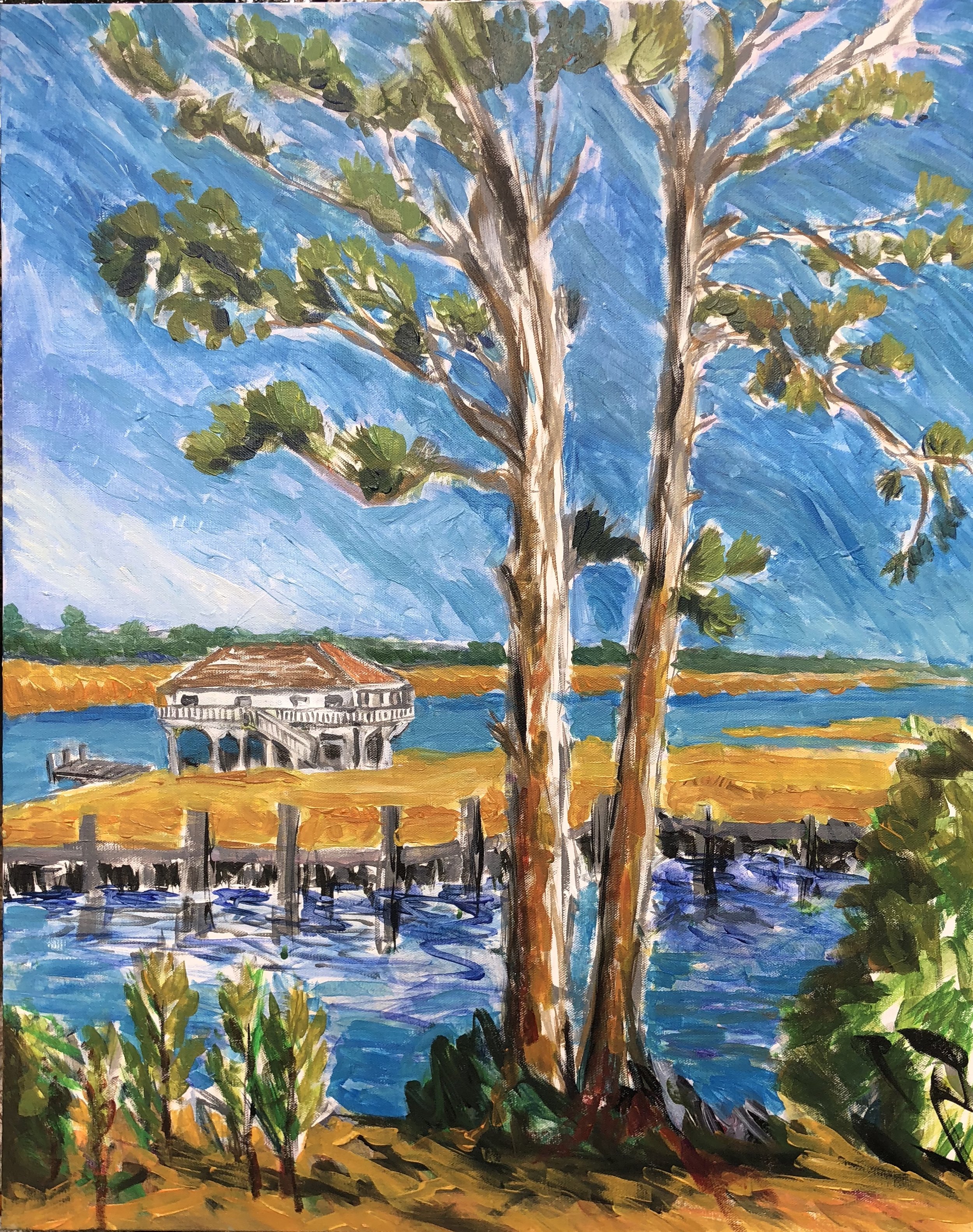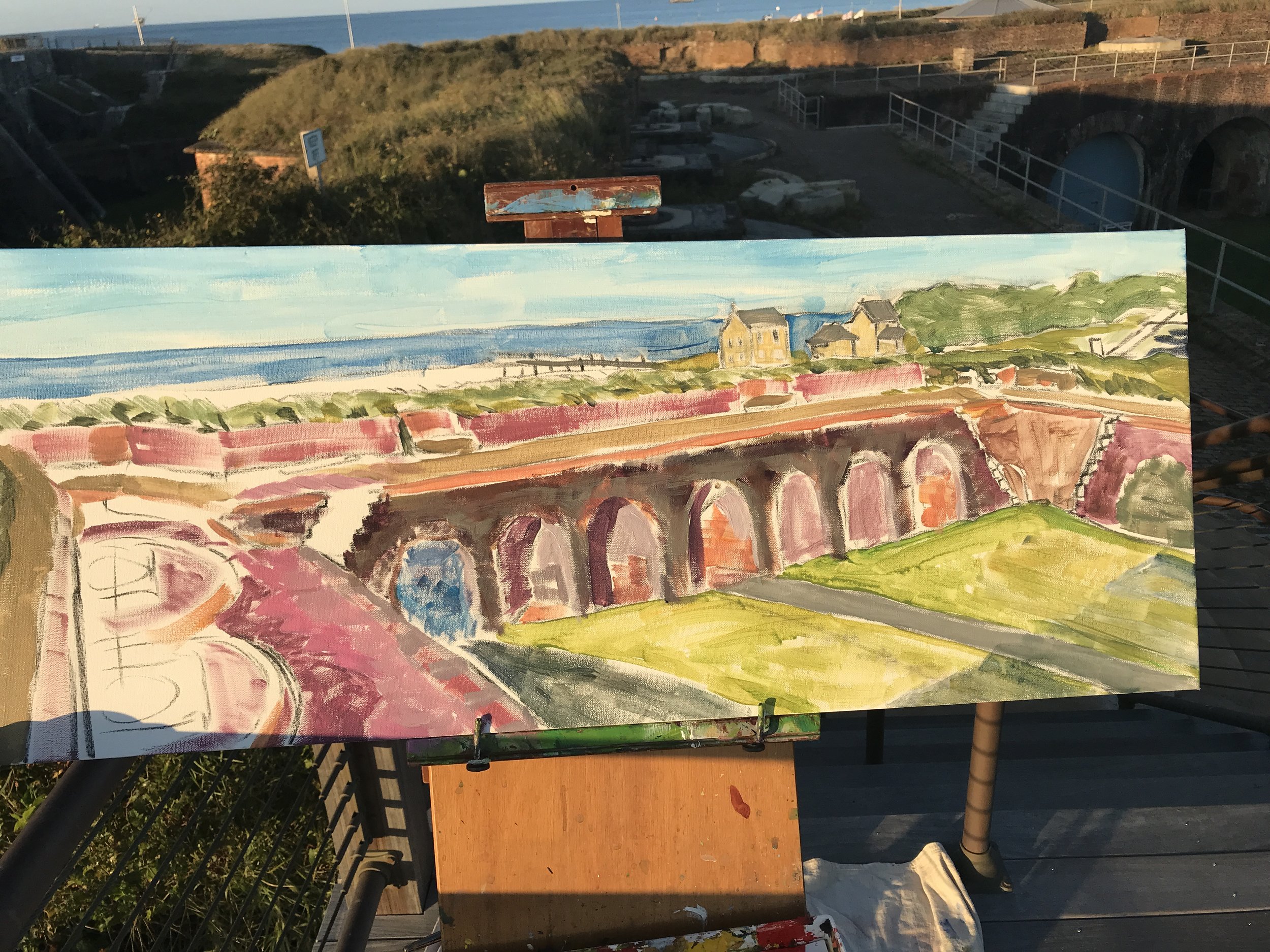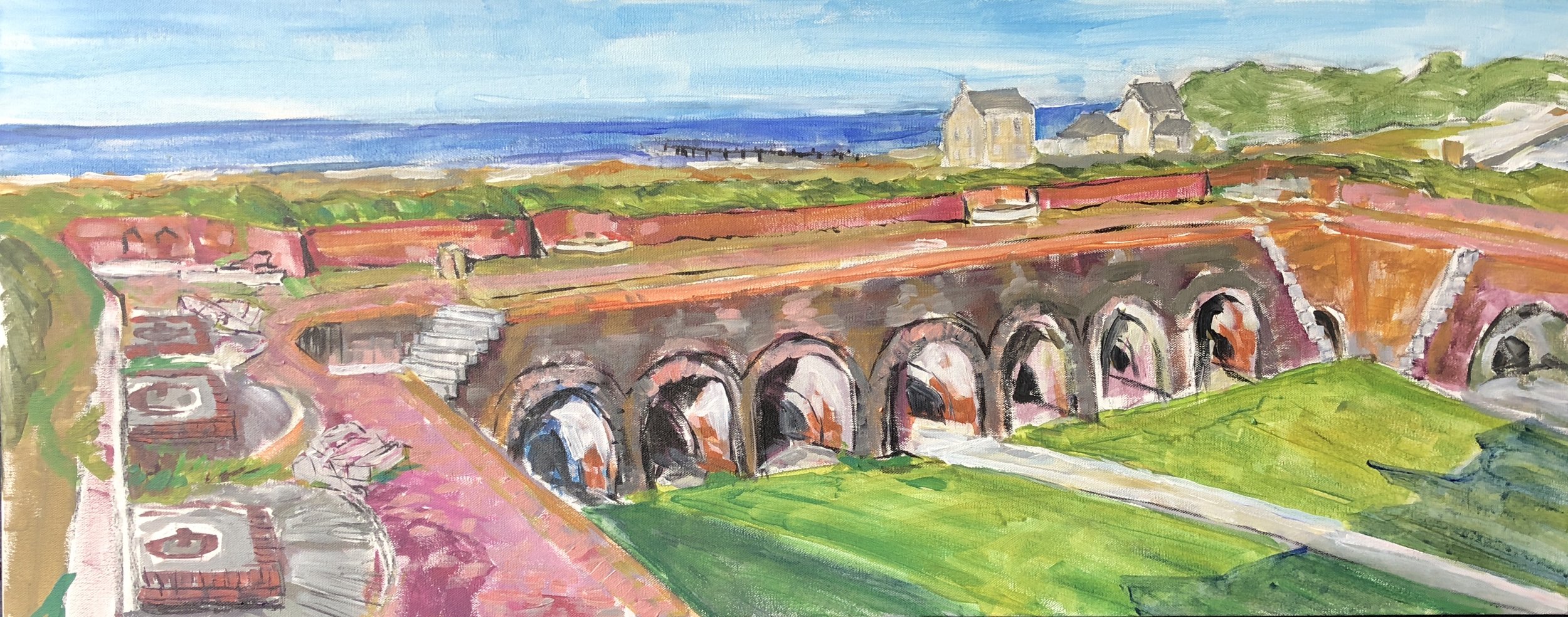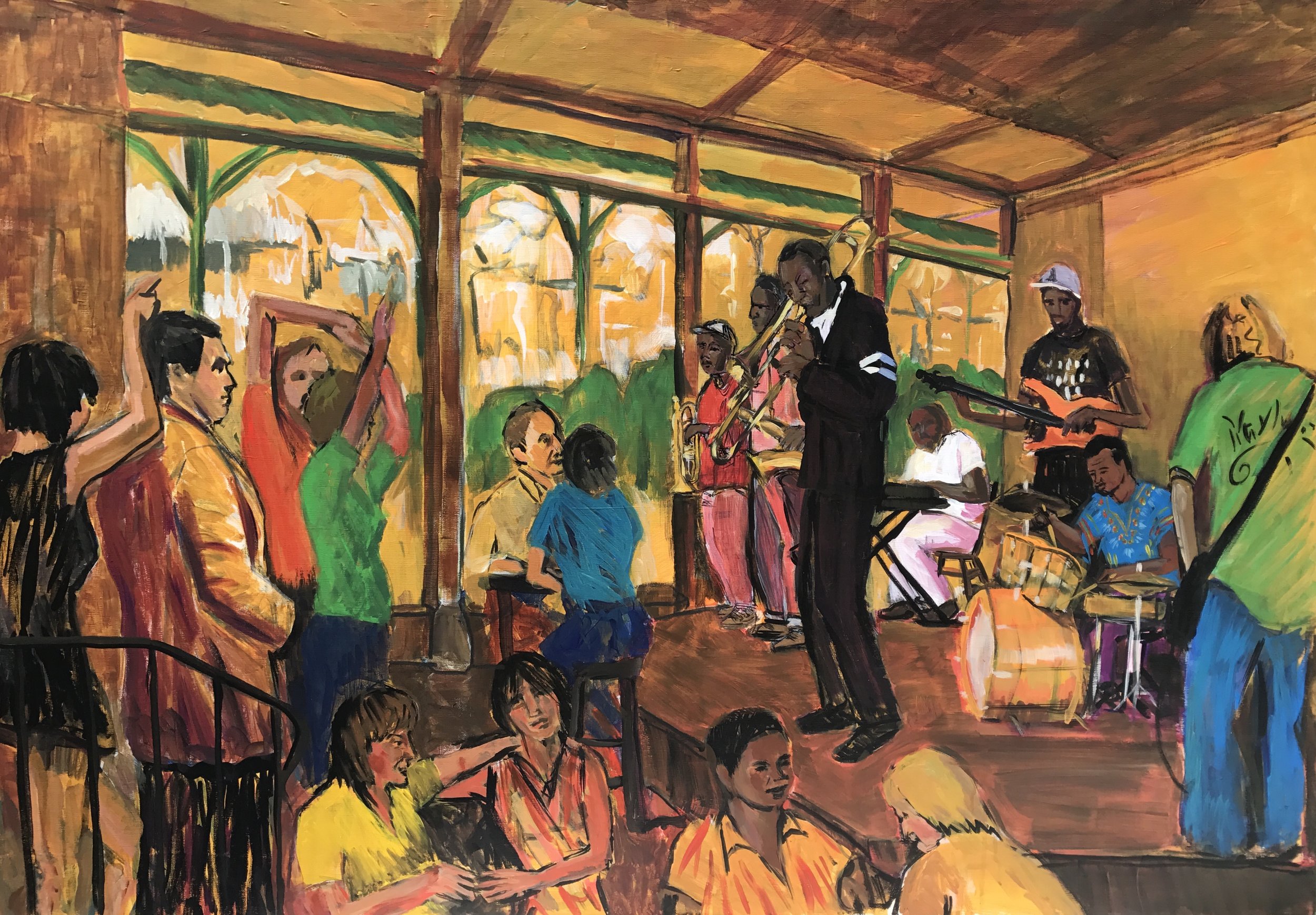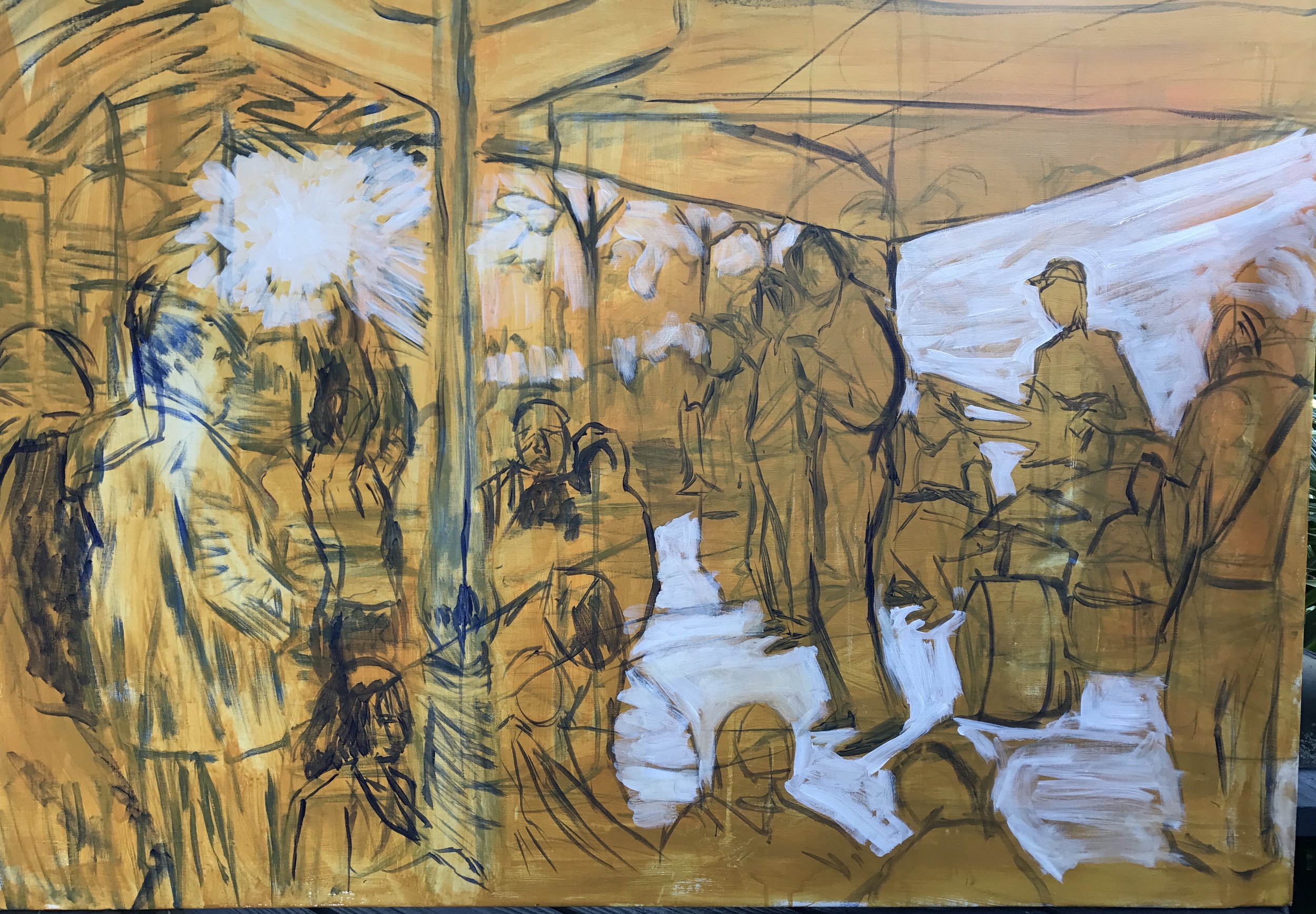At the very beginning, I would take a sketch pad and a pencil or marker into some nearby woods, sit down in the brush, and draw what was right in front of my face without discrimination. I ended up with a lot of scenes of tangled bushes and grasses as dense and chaotic as what I saw. There was no way in. Later on, I’d aim for the “perfect point of view" but there usually were flaws, things blocked, out of balance, or just unnecessary. Getting to the point of leaving something out was a slow lesson for me. Like, years.
Between the holidays, I went out to Delisle and did a scene of the Wolf River. It felt at first like I was regressing into old inspirations and themes- pine trees and bushes, but what I wanted was something to see between and through the pines. I started this one out with a gray under drawing and aimed to keep the colors thin and light. This is on a 24 x 30 canvas.
As I moved ahead all the underbrush in the foreground and middle distance began to tug at me urging me to pay attention to its chaotic half shaped tumble weeds and I went along for awhile even though it obscured the opportunity to express the freedom of travel on the river. This took me to something like this.
By this time, my time on scene had run out. Back home at the studio I decided to do some pruning. It began by doing the sky and cutting into the tree and leaves in places. At first I did it in a lavender sky but that didn't work and so I went from white to full on cerulean with touches here and there of ultramarine. I put it in with a very small brush that felt a little like Van Gogh at first (regression, maybe, but always plenty to learn) but it didn't have that effect when finished. It felt like the blue was more intense than the yellow green of the trees and was overpowering it, an effect I struggled with in the Bryant Grocery painting. So I darkened the fans of pine needles. The piece came together when I realized I should just clear away everything blocking the house and the horizon. I used the yellow ochre and orange to do the reeds and middle and part of the foreground. I did some softer greens for the far tree line and added a few blue strokes in the space between the yellow and green. And then I added a sky blue for the water which worked nicely with the yellows and oranges. I painted the whole house, eliminating the two trees on the left side. I used the blue in the canal to push back on and shape some of the clutter and blockage of the underbrush. I liked the light browns in the trunk and was hoping to hold on to some of those colors along the way. This took me to this point.
I did most all of this without using reference photos. In the final push I added red browns into the trunks and branches, put some notches into the far marsh at the waterline, put in a small road and a figure on the pier in the middle distance and worked on the foreground bushes and saplings for awhile. I used charcoal to add some graphic accents on the pier and the tree trunks. This got me to here, and here it will stop.


